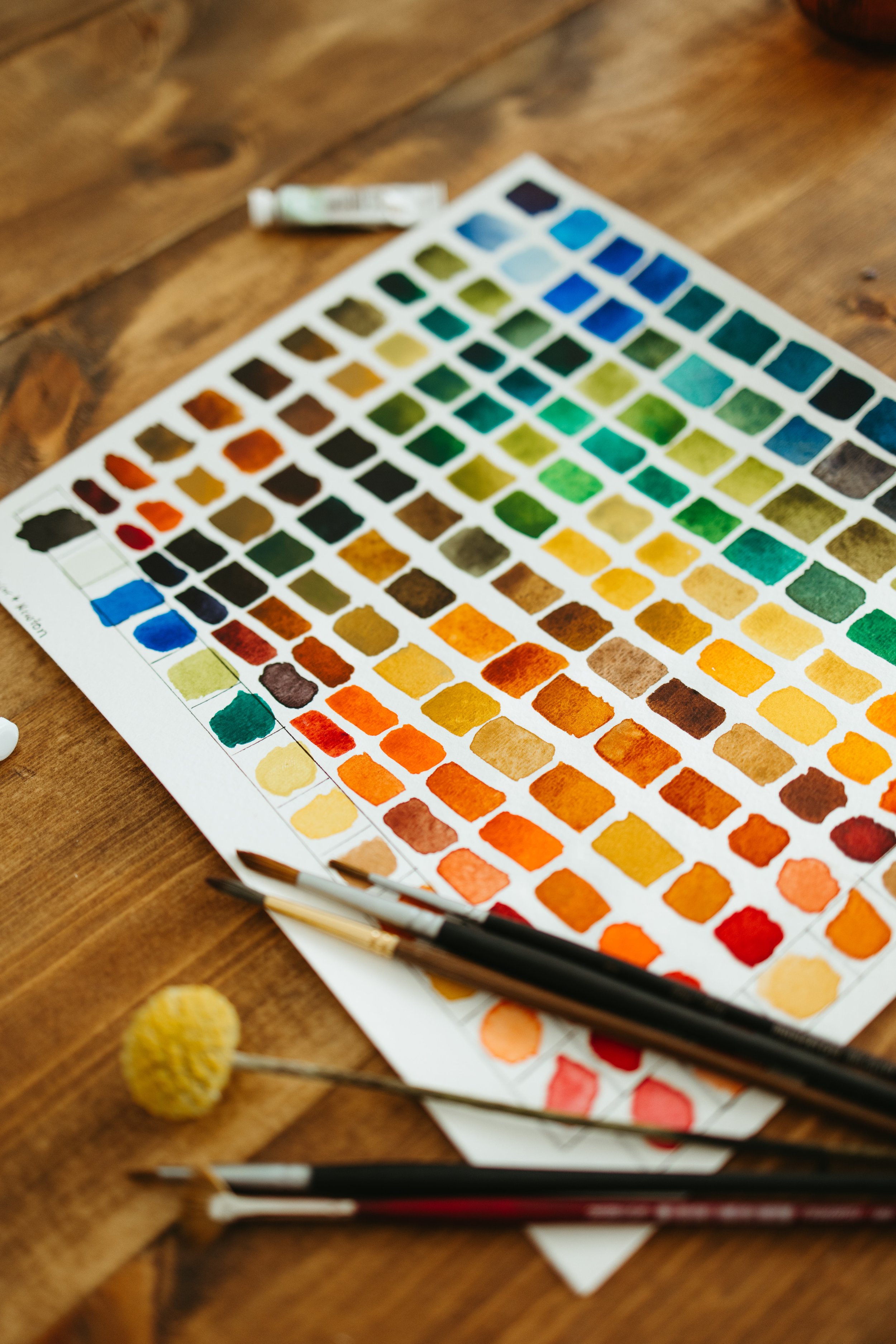Exploring the Canvas: A Guide to the Types of Paper Artists Use
As artists, one of the fundamental decisions we make is the choice of canvas—or in my case, paper. The type of paper used can significantly impact the final outcome of an artwork, affecting everything from texture to color vibrancy. In this guide, we'll delve into some common types of paper used by myself personally, and many other artists and discuss their characteristics and suitability for different mediums.
Arches Cold Press Paper: My Preferred Canvas for Original Artworks
When it comes to creating original artworks, the choice of paper plays a crucial role in bringing our vision to life. For my original pieces, I exclusively use Arches Cold Press paper. This premium-quality paper comes in sheets or blocks - preference for me depends on the project!
Sheets of Paper:
Individual Sheets: When paper is sold as sheets, it means that each piece of paper is separate from the others. Artists typically purchase sheets in various sizes, ranging from standard sizes like 9" x 12" or 22" x 30" to custom sizes as needed.
Flexibility: Sheets of paper offer artists the flexibility to work on different sizes of paper for various projects. Artists can easily tear off a single sheet from the pad or pack to start a new artwork.
Storage: Sheets of paper are typically stored flat in a portfolio, flat file, or similar storage solution to prevent damage or warping.
Blocks of Paper:
Bound Pad: A block of paper consists of multiple sheets of paper bound together along one edge, typically with an adhesive. The binding securely holds the sheets in place, preventing warping and allowing artists to work directly on the top sheet.
Glued Edges: The edges of the paper in a block are glued together, forming a tight seal that prevents moisture from seeping in and causing the paper to buckle or warp when wet media, such as watercolor, is applied.
Convenience: Blocks of paper offer convenience for artists, especially those working with wet media like watercolor. Since the paper is securely bound, there's no need to stretch or tape down the paper before painting. Additionally, the bound edges provide a built-in support for working without an easel, allowing artists to paint en plein air or on the go.
Removal: Once an artwork is complete, artists can remove the top sheet from the block by carefully sliding a palette knife or similar tool along the edge to release the adhesive binding. This allows the artist to retain the remaining sheets in the block for future use without the need for additional stretching or preparation.
In summary, while both sheets and blocks of paper are suitable for creating artwork, blocks offer added convenience and stability for artists working with wet media, particularly watercolor. The choice between sheets and blocks often comes down to personal preference and the specific requirements of the artist's creative process. Arches Cold Press paper offers the perfect balance of texture and absorbency, allowing for precise detailing and vibrant color expression. Its durability and resistance to warping make it an ideal choice for watercolor artists seeking longevity and archival quality in their artworks.
-
Watercolor artists understand the importance of selecting the right paper to complement their techniques and achieve desired effects. Here are some other common types of fine art watercolor paper favored by artists:
1. Rough Press Paper:
* Texture: Rough press paper has a coarse texture, featuring prominent peaks and valleys on its surface. This texture creates dynamic and expressive brushstrokes, making it ideal for creating bold, textured effects in watercolor paintings.
2. Cold Press Paper:
* Texture: Cold press paper has a medium texture, falling between rough and hot press papers. It offers a balanced surface that provides some texture for paint to grip onto while still allowing for smooth washes and intricate details. Cold press paper is versatile and suitable for various watercolor techniques.
3. Hot Press Paper:
* Texture: Hot press paper has a smooth surface with minimal texture. It provides a pristine, uniform surface that is well-suited for detailed work and precise brush control. Hot press paper is favored by artists who prefer a smoother finish and delicate, intricate painting styles.
4. Handmade Paper:
* Texture: Handmade watercolor paper is crafted using traditional methods, resulting in unique textures and characteristics. Each sheet of handmade paper is one-of-a-kind, featuring irregularities and imperfections that add depth and character to artworks. Handmade paper offers artists the opportunity to experiment with unconventional textures and surfaces.
5. Synthetic Paper:
* Material: Synthetic watercolor paper is made from non-paper materials such as polypropylene or polyester. It offers durability, water-resistance, and dimensional stability, making it suitable for outdoor painting, mixed media techniques, or experimental applications where traditional paper might not suffice.
6. Yupo Paper:
* Material: Yupo paper is a type of synthetic paper made from polypropylene. It has a non-absorbent surface that allows for unique watercolor effects, such as lifting paint, creating fluid washes, and layering colors without worrying about buckling or warping. Yupo paper is ideal for experimental and abstract watercolor painting.
Each type of watercolor paper offers its own unique characteristics and advantages, catering to the diverse preferences and artistic styles of watercolor artists. Experimenting with different types of paper can enrich your creative process and inspire new possibilities in your artwork.
Giclée Hot Press Paper: Elevating Fine Art Prints to New Heights
For my prints, I entrust the process to CPL Imaging, a reputable fine art printer based in Duluth, Minnesota. The prints are rendered on Giclée Hot Press paper, a premium substrate known for its exceptional quality and fidelity to the original artwork. Here's what sets Giclée prints apart:
Definition: Giclée (pronounced zhee-CLAY) printing involves using specialized inkjet printers and archival quality inks to produce high-resolution prints with exceptional color accuracy and detail reproduction.
Quality: Giclée prints are renowned for their museum-quality standards. The combination of archival inks and premium paper ensures that the prints have longevity and resistance to fading, preserving the integrity of the artwork for years to come.
Versatility: Giclée printing allows for a wide range of substrates to be used, including various types of paper and canvas. This versatility enables artists to choose the medium that best complements their artwork, whether it's a smooth hot press paper for intricate details or a textured canvas for a more painterly effect.
Collaborating with CPL Imaging ensures that my prints maintain the same level of quality and craftsmanship as the original artworks, allowing collectors to enjoy faithful reproductions that capture the essence of the artwork.
In conclusion, the choice of paper is an integral aspect of the artistic process, influencing the texture, color, and overall impact of the artwork. Whether creating original pieces or producing prints, selecting the right paper is essential for realizing our creative vision and delivering an exceptional viewing experience for art enthusiasts. If interested in any of my Giclée prints you can shop for them here, and if you are interested in taking up your own creative side you can shop the arches paper I use here. Thanks for reading, and happy creating!




